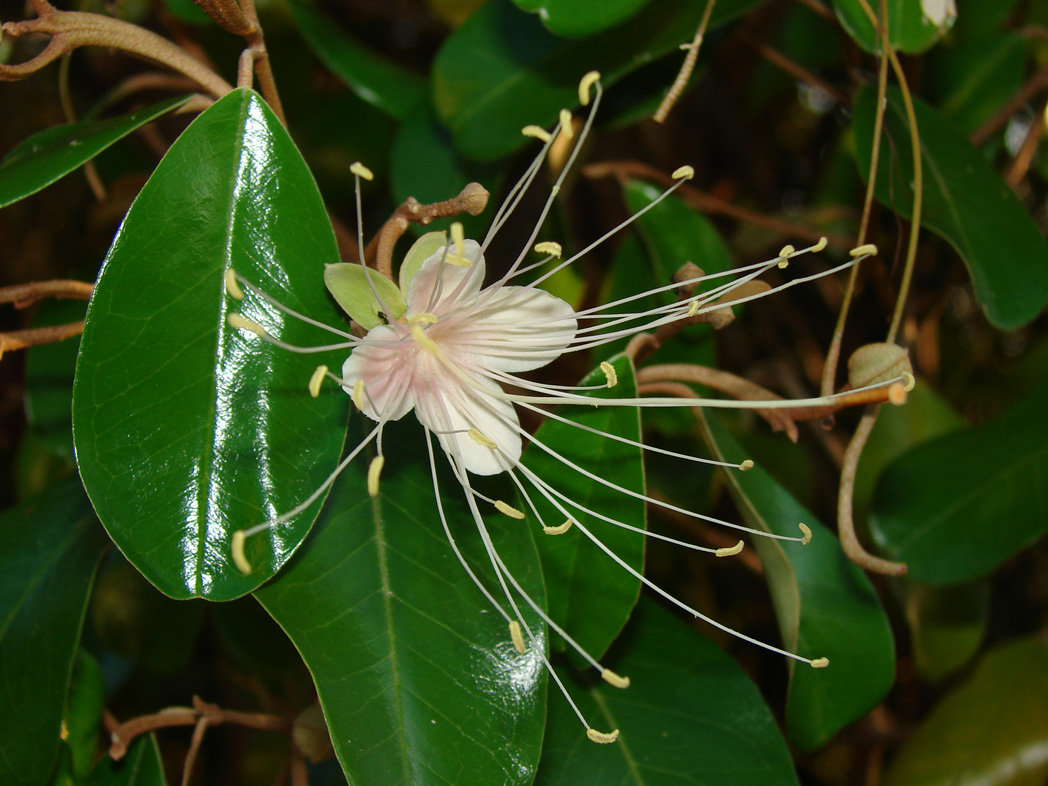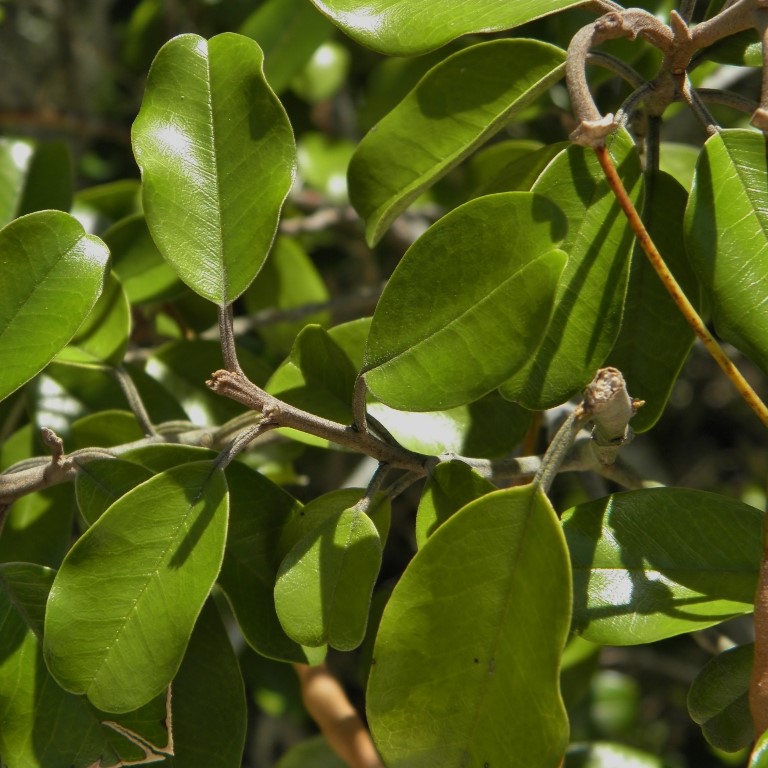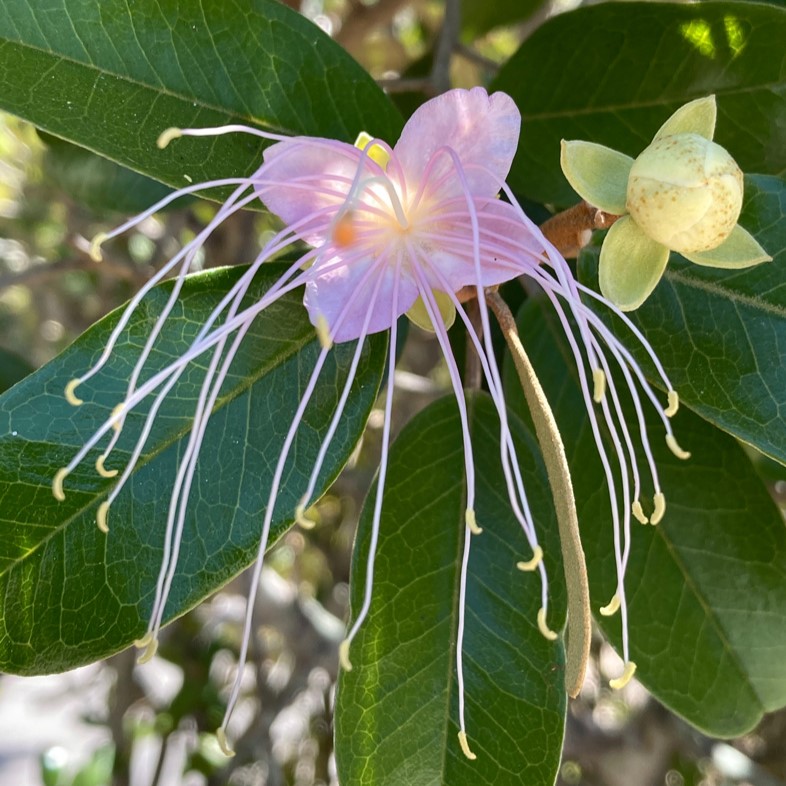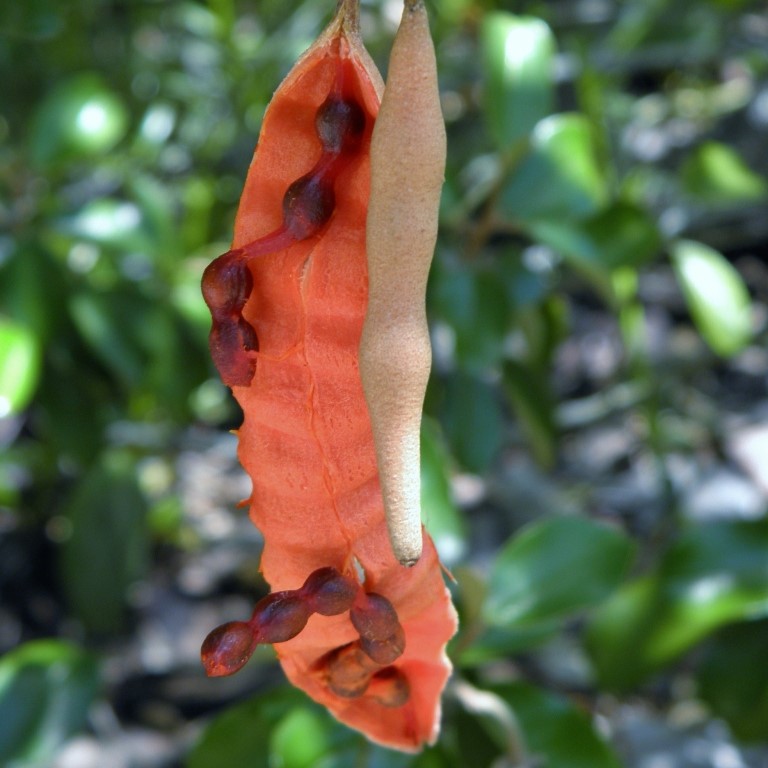Jamaican caper
Pictured above: Jamaican caper (Quadrella jamaicensis) by Ryan Fessenden. Click on terms for botanical definitions. View post as a PDF.
Jamaican caper is a handsome evergreen shrub or small tree with unique eye-catching blooms. These fragrant white flowers open late in the day and turn pinkish within a few hours. They attract a variety of insects, while the dense foliage provides cover for small wildlife. Birds will eat the seeds. Jamaican caper is a larval host for the Florida white butterfly. It is found in coastal hammocks in Central and South Florida.
The showy flowers are small (about 1 inch in diameter) with four notched petals. Most noticeable are the many conspicuously long filaments with pink or yellow anthers. As the flower ages, it loses its petals and its filaments darken to a maroon hue. The simple leaves are elliptic with entire margins and notched apices. The upper leaf surface is dark green, leathery and glossy; the underside is covered in scales, giving it a whitish sheen. Leaf arrangement is alternate. Fruits are tan pod-like capsules. When they open, they reveal a brilliant coral-colored endocarp and many shiny red to brown seeds. Young stems are covered in a rusty pubescence. The bark is rough and reddish brown. This large shrub to small tree is generally upright with an oval or pyramidal crown.
Taxonomically, Jamaican caper once was known as Capparis cynophallophora. Some sources still place it in the Capparaceae, or caper, family.
Family: Brassicaceae (Mustard, cabbage or crucifer family)
Native range: Coastal counties from Brevard to Pinellas to the Keys
To see where natural populations of Jamaican caper have been vouchered, visit www.florida.plantatlas.usf.edu.
Lifespan: Perennial
Soil: Dry to moist, well-drained sandy or calcareous soils
Exposure: Full sun to partial shade
Growth habit: 6–15’ tall, 6–10’ wide
Propagation: Seeds (may require scarification)
Florida regions of landscape suitability: Central, South
Garden tips: Jamaican caper is an excellent ornamental accent plant for both formal and naturalistic landscapes. It provides year-round interest with its dark shimmery foliage, beautiful spring blooms, and striking open seed pods. It works well as a specimen plant or en masse as a buffer or screen. Jamaican caper tolerates drought, salt, and hurricane winds and does very well in a coastal landscape. No special care is needed for this slow- to moderate-growing shrub, but it may be trimmed as needed.
Jamaican caper is available from nurseries that specialize in Florida native plants. Visit www.plantrealflorida.org to find a nursery in your area.
Learn more about Jamaican caper from the Florida Native Plant Society and the Institute for Regional Conservation.




